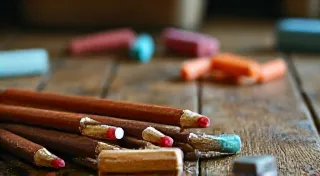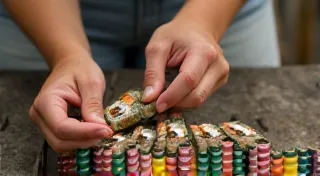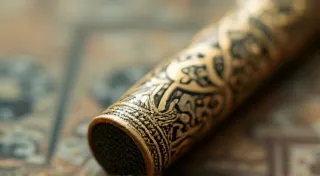The Impact of World War II on Eraser Production
There's a certain magic in holding something truly old, something that has survived the relentless march of time. For those of us captivated by the world of vintage stationery, that magic is often found in the humble pencil eraser. More than just a tool to correct mistakes, these small objects offer a tangible link to a bygone era, whispering stories of schoolrooms, offices, and the everyday lives of those who used them. And few periods profoundly shaped the landscape of eraser production and design as much as World War II.
My own fascination began with a simple, almost insignificant find – a pink, hard rubber eraser bearing the faded imprint "Eagle Pencil Co." My grandfather, a man of few words but immense kindness, had squirreled it away in a box of his old belongings. Holding it, I felt a connection not just to him, but to the generation that lived through a time of unprecedented global upheaval. It wasn’t just an eraser; it was a silent witness to history.
The Pre-War Era: A Time of Variety and Innovation
Before 1939, the world of pencil erasers was remarkably diverse. Rubber, harvested from the Amazon rainforest, was the dominant material, though innovations like hard rubber and celluloid were gaining traction. Companies like Faber-Castell, Eagle Pencil, Pink Eraser Company, and Mitchell were all vying for market share, each experimenting with different shapes, colors, and manufacturing techniques. You could find crumbly pink erasers, smooth grey ones, elegant black molded varieties, and even whimsical animal-shaped erasers designed to appeal to children. The quality varied considerably, reflecting the competition and the evolving understanding of rubber compounding and molding. The variety of shapes alone is astounding; collectors now carefully examine these details, and understanding their evolution adds another layer of appreciation - something we're starting to see highlighted in discussions around the evolution of eraser shapes.
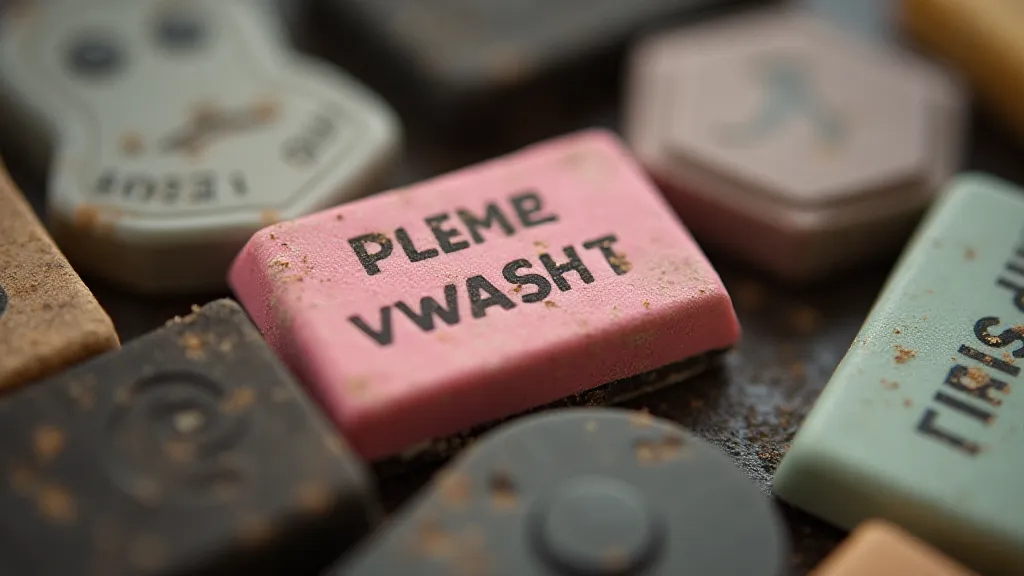
Rubber Rationing and Material Substitutions
The outbreak of World War II dramatically altered everything. The most immediate impact was the severe restriction of natural rubber imports. Rubber plantations in Southeast Asia, key sources for the global supply, fell under Japanese control. The Allied nations faced a critical shortage, which extended far beyond tire production, impacting countless industries, including the manufacture of pencil erasers.
To address this crisis, governments instituted rubber rationing. Private consumption was severely curtailed, and priority was given to military applications. Eraser manufacturers were forced to find alternatives. This period saw the rise of synthetic rubber, initially a costly and inferior substitute. Early synthetic rubber erasers were often noticeably harder and less pliable than their natural rubber counterparts. They also tended to leave more residue on paper, a frustrating characteristic for students and artists alike.
Beyond synthetic rubber, other materials were experimented with. Certain types of hard vinyl and even compressed paper were briefly utilized. These attempts, while demonstrating ingenuity, rarely matched the erasing qualities or durability of traditional rubber.
The Impact on Eraser Design and Production
The scarcity of materials extended beyond just the core rubber itself. The cardboard and paper used for packaging became subject to rationing as well. Elaborate, multi-layered packaging disappeared, replaced by simple, often plain wrappers. The intricate molds used to create novelty erasers became less common, as manufacturers prioritized efficiency and reduced material waste. The limited availability of materials also impacted the colors readily available. While pink remained a popular choice, manufacturers had to adapt to the realities of what they could source, leading to a wider range of less vibrant hues.
Production processes were streamlined to conserve resources and manpower. Many factories converted to war production, and skilled workers were diverted to other essential industries. The overall output of pencil erasers plummeted. Existing stock became highly valued, and prices rose. The situation fostered a unique creativity and resourcefulness within the industry, leading to innovations driven by necessity. It's a fascinating look into how wartime pressures shaped the seemingly mundane world of stationery – and one that also highlights the burgeoning interest in the future of vintage eraser collecting, as enthusiasts look for ways to appreciate and preserve these unique pieces of history.
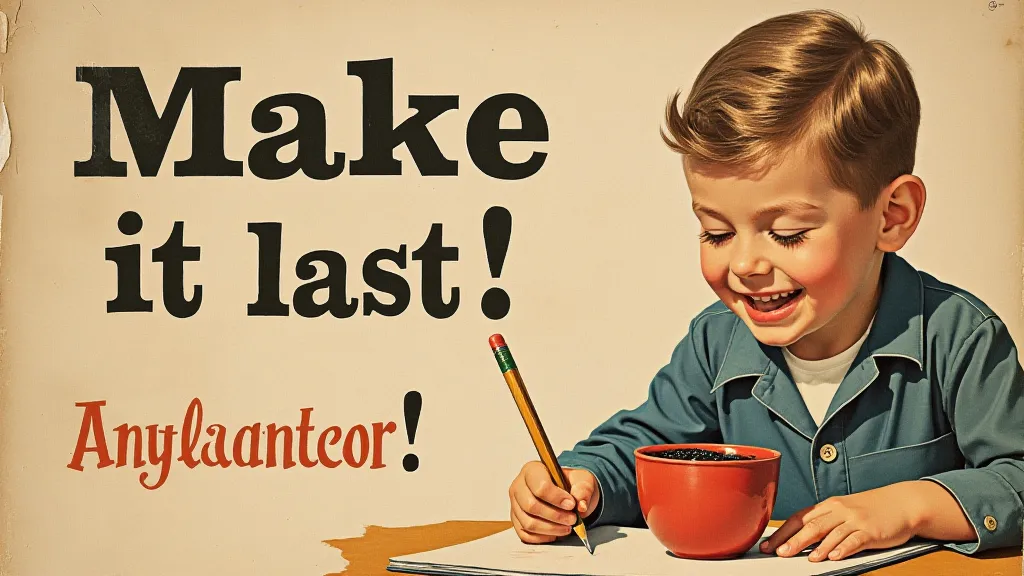
Identifying Erasers from the WWII Era: What to Look For
For collectors, identifying erasers produced during the WWII years can be a rewarding, if challenging, endeavor. Here are some key characteristics to consider:
- Material: Erasers from 1942-1945 are more likely to be made of synthetic rubber or a less desirable substitute. Natural rubber erasers from earlier years will often feel noticeably softer and more pliable.
- Packaging: Look for simple, unadorned wrappers. The absence of elaborate branding or multi-layered packaging is a strong indicator.
- Markings: Many manufacturers, in an effort to convey a sense of patriotism and conservation, included wartime slogans or symbols on their products. While not always present, these markings can provide valuable clues.
- Color: While pink remained a popular color, other hues, particularly duller shades like grey and brown, became more common due to material limitations.
- Residue: Synthetic rubber erasers often leave more residue on paper. While not a definitive test, it can be a contributing factor in identification.
- Origin: While many erasers were produced domestically, the disruption of global trade routes also introduced some unusual imports. Collectors are increasingly interested in identifying and documenting these rare finds, often looking to expertise from specialists in Japanese vintage erasers to help identify unusual markings or manufacturing techniques.
The Post-War Rebound and the Legacy of Resourcefulness
With the end of the war and the resumption of trade, natural rubber began to flow again. Eraser production gradually returned to pre-war levels, and the innovative, albeit sometimes inferior, substitutes faded from memory. However, the lessons learned during those lean years left an indelible mark. The experience fostered a culture of resourcefulness and efficiency within the industry.
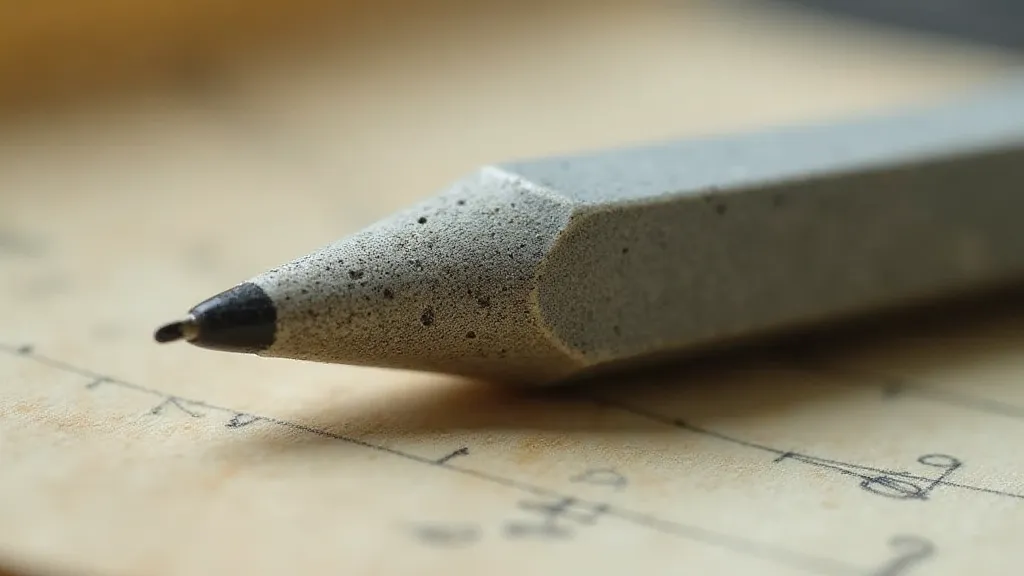
Today, vintage pencil erasers from the WWII era are highly sought after by collectors. They represent not just a nostalgic connection to the past, but a tangible reminder of human resilience and the power of innovation in the face of adversity. Holding one of these small artifacts, I'm reminded of my grandfather and the generation that endured so much. It’s a quiet piece of history, whispered through the gentle scent of aged rubber and the subtle marks left on the paper.
The humble pencil eraser, so often overlooked, offers a unique window into a pivotal moment in history—a story of constraint, adaptation, and ultimately, the enduring human spirit. Examining these artifacts provides a fascinating glimpse into an era of unprecedented challenge, and it’s clear that the ingenuity displayed by eraser manufacturers had a lasting impact. The meticulous detail involved in identifying and cataloging these pieces is a testament to the growing appreciation for this often-overlooked piece of history.
Further exploration of the details surrounding eraser production during this period reveals not only the logistical challenges but also the creative solutions employed. It's a testament to the human spirit's ability to find opportunity even in the most difficult circumstances. The focus on resourcefulness led to unexpected innovations that continue to resonate with collectors and historians alike. The resilience and adaptability of those involved in manufacturing truly exemplifies the era’s spirit, and it’s a story well worth preserving and sharing with future generations. The legacy lives on in the enduring fascination with these small pieces of history, each one a silent witness to a pivotal moment in time.
